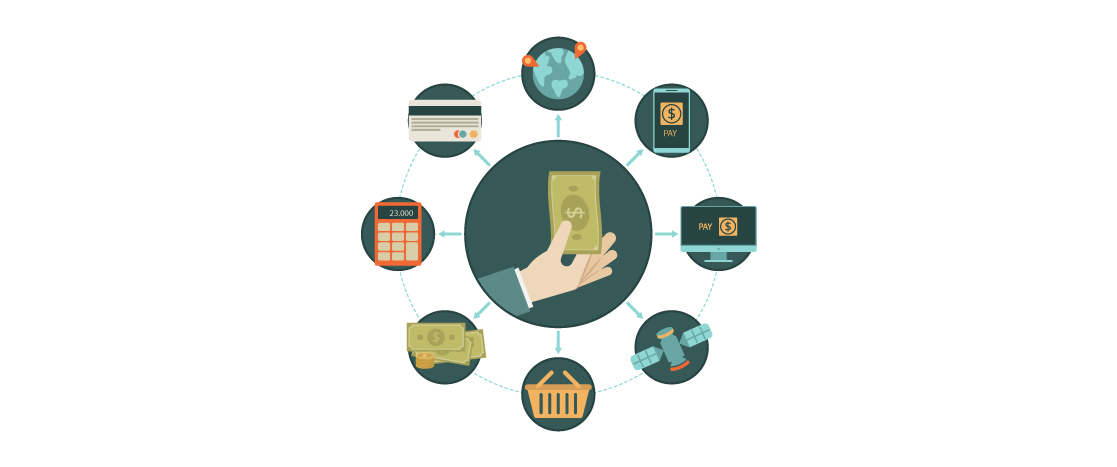
How to Unpublish a WordPress Site (Updated Guide 2025)
As a WordPress user, you may find yourself in situations where you must take your website offline – temporarily or permanently. Whether you are preparing for a significant redesign, addressing security concerns, or simply want to remove your website from the internet, understanding how to unpublish a WordPress site is essential.
Unpublishing a WordPress website involves more than simply taking it down. It requires a strategic approach to ensure a smooth transition without affecting your search engine optimization (SEO) efforts, user experience, and data security.
This comprehensive guide will walk you through the step-by-step process of unpublishing a WordPress site. We will cover methods to unpublish the entire site and techniques to temporarily remove specific WordPress pages or posts. Additionally, we will share valuable tips to minimize the SEO impact of unpublishing your self-hosted WordPress website.
How do you unpublish the entire website in WordPress?
You can unpublish the entire website in WordPress using two different methods: permanent deletion and temporary deletion with maintenance mode.
Unpublish a WordPress Site through Permanent Deletion
If you want to remove your WordPress website permanently, you can quickly delete it from your hosting account dashboard. However, before proceeding, creating a complete WordPress backup is highly recommended. This way, you can keep a record of your website content and have the option to bring the website back online if needed, ensuring a smooth reinstallation and migration process.
Here’s how to unpublish a WordPress site permanently from your WordPress Hosting Panel:
- Login to your hosting account and navigate to the websites or applications menu.
- Click the delete icon next to the application or website you want to delete permanently.
- Enter “DELETE” in the text field and click the “Yes” button to delete the application.
Note: The steps for deleting the website on the hosting panel shown above are for the Devrims hosting platform. The steps can be different for different hosting panels.
Alternatively, you can manually delete your website by removing all the website files using an FTP client like FileZilla or your hosting control panel’s built-in File Manager.
Unpublish a WordPress Site Temporarily using the Maintenance Mode
Activating the maintenance mode allows you to temporarily unpublish a WordPress site. This is especially helpful when you are making significant changes to your website and want to prevent visitors from seeing it until the maintenance process is complete.
You can use SeedProd, a well-known plugin, to temporarily unpublish your WordPress site or put it in maintenance mode.
- Login to your WordPress admin dashboard.
- Go to the Plugin>Add New section on the left sidebar.
- Search for the SeedProd plugin and click on the Install button.
- Once the installation is complete, click on the Activate button.
- After activation, you can see the SeedProd section on the left sidebar.
- Now, navigate to the SeedProd > Setup section on the left sidebar and click the “Setup a Maintenance Page” button.
- Choose a template from the library and customize it using the drag-and-drop builder.
- Now, go to the SeedProd > Landing Pages section, click the toggle button under the Maintenance Mode section, and set it to the Active status.
Once you perform all these actions, your entire site will be inaccessible to the public until you deactivate the maintenance mode.
You can also unpublish the site temporary by adding some code in function.php file.
To put WordPress in maintenance mode manually, follow these steps:
- In your WordPress dashboard, go to Tools > Theme File Editor.
- Open the `functions.php` file.
- Copy the existing code as a backup.
- Add the following code snippet to the bottom of the `functions.php` file:
function wp_maintenance_mode() {
if (!current_user_can(‘edit_themes’) || !is_user_logged_in()) {
wp_die(‘<h1>Under Maintenance</h1><br />Website under planned maintenance. Please check back later.’);
}
}
add_action(‘get_header’, ‘wp_maintenance_mode’);
- Click “Update File.“
- Visit your site in a new browser window to ensure it’s in maintenance mode.
This method is best for those comfortable with editing code and looking for a quick, generic maintenance mode page. Remember to disable maintenance mode once updates are complete.
How to Unpublish WordPress Pages or Posts?
There are various methods for unpublishing WordPress pages or posts. Let’s examine some of them.
Switch to Draft
You can temporarily unpublish a WordPress page or post by changing its status to “Draft.” This allows you to hide the content from the audience while you make necessary updates or improvements. Follow these steps to do that:
- Navigate to Pages/Posts>All Pages/Posts on the WordPress admin dashboard.
- Hover over the published page/post you want to unpublish and choose the “Edit” option.
- Click the “Switch to draft” button on the right options sidebar.
- Click the “OK” button to confirm that you want to perform this action.
Use Bulk Actions for Multiple Pages or Posts
You can use WordPress’s bulk actions feature to unpublish multiple WordPress pages or posts simultaneously. To do that:
- Navigate to the Pages or Posts section on the left sidebar of the WordPress dashboard.
- Check the boxes following the pages or posts you want to unpublish.
- Now, click the Bulk Actions drop-down menu, select the “Edit” option, and click the “Apply” button next to it.
- Expand the Status drop-down menu and select the “Draft” option.
- Click on the “Update” button. You can see that both pages are moved to the draft state.
Use the Private Mode
Enabling the Private mode allows you to unpublish a WordPress page or post and make it visible only to website collaborators with specific user roles. To enable the private mode:
- Open the page or post you want to make private in the block editor.
- On the right side of the options bar, select the “Private” option in the visibility section.
- Click the “OK” button to confirm that you want to act.
Use Password Protection
Password protection prevents the public from seeing the post or page while minimizing internal security risks among your website’s collaborators or logged-in users. To use password protection:
- Open the page or post you want to password-protect in the block editor.
- In the Visibility section on the right-sidebar, choose the “Password protected” mode.
- Enter a strong password.
- Click on the “Update” button to apply the change.
Tips for Unpublishing Your WordPress Content
Here are some helpful tips for unpublishing your WordPress content.
Archive Instead of Unpublish
Instead of completely unpublishing pages or posts, archiving them can be a better solution for preserving your SEO efforts. When you archive content, it remains hidden from public view but still exists within your site’s structure. This allows any internal links pointing to the archived pages to remain integral.
Additionally, the archived URLs can still be accessed directly if needed, preventing the creation of broken links, which can negatively impact SEO. Archiving allows you to temporarily remove content from visibility while maintaining the original architecture and link equity built around those pages.
To archive content, you must install a third-party archives plugin like LH Archived Post Status, as WordPress does not provide this feature by default.
Repurpose Your Content
If content quality is why you want to unpublish your WordPress post or page, consider repurposing it instead. Revamp old blog posts into new articles, transform them into infographics or videos, or merge related content into comprehensive guides.
As you repurpose the content, remember to optimize it for current search engine algorithms by updating keywords, meta descriptions, and headers.
Assess the Impact on SEO and User Experience (UX)
Unpublishing certain pages or posts can create broken links, negatively impacting your SEO and user experience (UX). WordPress 301 redirects should be created to minimize these impacts so visitors are redirected to the new URL instead of seeing an error page.
You can also prevent search engine robots from indexing your content entirely by going to Settings > Reading section on the left sidebar of the WordPress dashboard and checking the “Discourage search engines from indexing this site” option.
Schedule Unpublishing
Consider scheduling the time to unpublish your WordPress page or post, especially for time-sensitive content like promotional offers and event-related pages. The PublishPress Future plugin allows you to automate and schedule changes to your posts, pages, and other content types.
How to Unpublish a WordPress Site FAQs
Here are answers to some frequently asked questions about how to unpublish a WordPress site.
What Happens When You Unpublish a WordPress Site?
When you unpublish a WordPress website, it is inaccessible to the general public. The pages, posts, and other content become unavailable and hidden.
Search engines eventually detect a site offline and remove it from their search results listings. This means your website will only appear in relevant searches once it is republished and reindexed by search engine crawlers.
Unpublishing a site is an effective way to temporarily take your online presence offline while maintaining the site’s files and database on your web hosting server.
How Do I Hide My WordPress Site from the Public?
You can put your WordPress site on maintenance mode to hide it from the public.
When Should I Unpublish My WordPress Site?
Suppose you want to remove your WordPress site from the web. In that case, you should permanently unpublish it and temporarily unpublish it via maintenance mode only when necessary for significant updates, security enhancements, or rebranding.
How to Unpublish a Page in WordPress?
To unpublish a WordPress page, you can switch its status to “Draft,” enable the “Private” mode, or use password protection.
What Are the Potential SEO Implications of Unpublishing Content?
Unpublishing content can lead to the creation of broken links, negatively impacting your SEO efforts. It can also cause search engines to remove the unpublished pages from their indexes, affecting your site’s visibility.
Conclusion
This guide has covered various methods for unpublishing a WordPress site, including permanent deletion and temporary maintenance mode. We have also explored techniques for unpublishing specific pages or posts, such as switching to draft, using bulk actions, enabling private mode, or password protection.
Remember, unpublishing content can have SEO implications, so consider alternatives like archiving or repurposing whenever possible. If you must unpublish pages or posts, implement proper URL redirects and take necessary measures to minimize the impact on your website’s search engine visibility and user experience.
Following the best practices outlined in this guide, you can confidently navigate unpublishing on WordPress while maintaining transparency with your audience and minimizing potential negative consequences.


